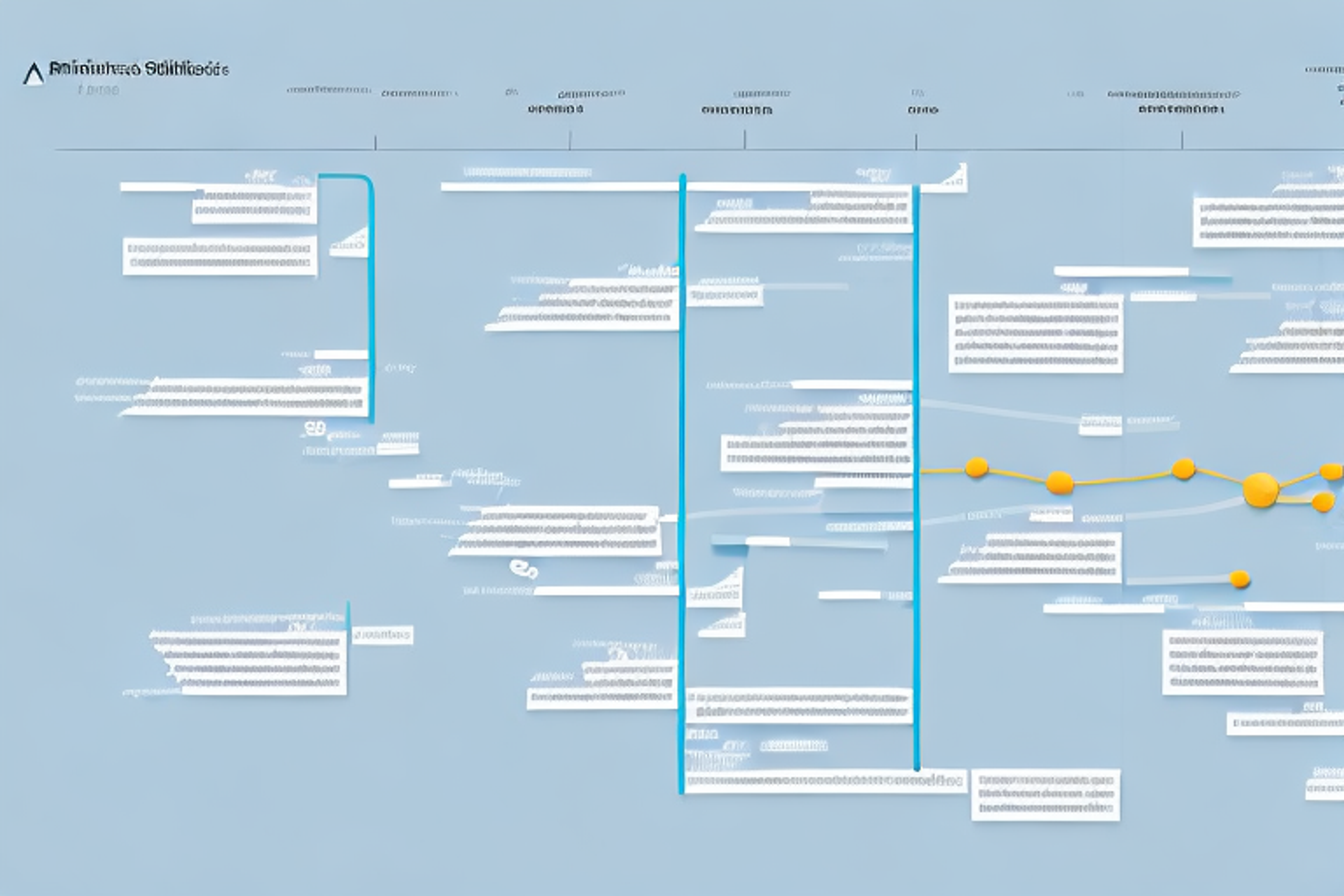Acceptance Criteria in User Stories: A Guide for Product Managers
This comprehensive guide for product managers explains the importance of acceptance criteria in user stories.
Posted June 13, 2025

Table of Contents
As a product manager, you are responsible for creating products that meet the needs and expectations of your customers. One of the most important tools at your disposal is user stories, which help you to understand and communicate what your customers want and need. However, without clear and specific acceptance criteria, user stories can be difficult to implement effectively. In this article, we will explore the importance of acceptance criteria in user stories and provide you with a comprehensive guide on how to define, manage, and update them throughout the development cycle.
What are acceptance criteria and why are they important in user stories?
Acceptance criteria are the specific conditions that must be met in order for a user story to be considered complete and acceptable. They are essentially a checklist of requirements that must be fulfilled in order to deliver a product that meets the needs and expectations of your customers. Acceptance criteria are important in user stories because they provide clarity and specificity about what needs to be done and what constitutes success. They also serve as a quality assurance tool, ensuring that the product meets the necessary standards and performs as intended.
Another reason why acceptance criteria are important in user stories is that they help to prevent misunderstandings and miscommunications between team members. By clearly defining what is expected, everyone involved in the project can work towards the same goal and avoid confusion or disagreements. Additionally, acceptance criteria can help to identify potential issues or roadblocks early on in the development process, allowing for adjustments to be made before it's too late.
It's also worth noting that acceptance criteria can be used to prioritize tasks and determine the order in which they should be completed. By breaking down a user story into specific requirements, it becomes easier to identify which tasks are most critical and which can be tackled later on. This can help to ensure that the most important aspects of the project are addressed first, and that the final product meets the needs of the customer in the most efficient way possible.
How to define acceptance criteria that align with business goals
Defining acceptance criteria that align with business goals starts with understanding what your customers want and what your product needs to do to fulfill those needs. A good way to begin is by conducting customer research and gathering feedback from stakeholders. This information can help you to identify the key features and functionalities that are most important to your customers and the business. Once you have a clear understanding of what needs to be done, you can start defining the acceptance criteria. It is important to make them concise, measurable, and specific. They should also be aligned with your business goals, which can help you to prioritize and allocate resources more effectively.
The role of acceptance criteria in the Agile development process
Acceptance criteria play a crucial role in the Agile development process by providing a shared understanding of what needs to be accomplished in each iteration. They help to guide the development team in their work, ensuring that they are building the right product and that their efforts are aligned with the overall goals of the project. By incorporating acceptance criteria into user stories, the team can work collaboratively and more efficiently, with a shared understanding of what success looks like.
Common mistakes to avoid when writing acceptance criteria for user stories
There are several common mistakes that product managers should avoid when writing acceptance criteria for user stories. One of the biggest mistakes is making them too vague or ambiguous, which can lead to misunderstandings and confusion. Another mistake is making them too complex or difficult to measure, which can make it difficult to determine whether a story has been successfully completed. Additionally, it is important to avoid making them too prescriptive or detailed, which can limit the flexibility of the development team and hinder their ability to find creative solutions.
Tips for ensuring clarity and specificity in acceptance criteria
To ensure clarity and specificity in acceptance criteria, there are several tips that product managers can follow. First, avoid using overly technical or jargon-filled language, which can be confusing for stakeholders who are not technical. Instead, use clear and concise language that is easy for anyone to understand. Additionally, make sure to define any terms or acronyms that may be unfamiliar to the reader. Finally, provide specific examples that illustrate the acceptance criteria so that everyone is clear on what needs to be done.
Examples of effective acceptance criteria for user stories in various industries
Effective acceptance criteria for user stories can vary depending on the industry and the specific needs of the product. However, there are some common themes that can be useful for product managers to consider. Examples of effective acceptance criteria in various industries include defining clear success metrics for a marketing campaign, ensuring that a medical device meets all regulatory requirements, or making sure that a financial application has a user-friendly interface and provides accurate data.
How to manage and update acceptance criteria throughout the development cycle
Managing and updating acceptance criteria throughout the development cycle is crucial to ensuring that the product meets the necessary standards and performs as intended. One way to do this is by creating a centralized system or tool that can be used to track and manage acceptance criteria. This system should be accessible to all stakeholders and updated regularly to reflect any changes or updates to the acceptance criteria. Additionally, it is important to review and update acceptance criteria regularly throughout the development cycle to ensure that they are still relevant and accurate.
The benefits of using acceptance criteria for product managers and development teams
The benefits of using acceptance criteria for product managers and development teams are numerous. For product managers, acceptance criteria provide a clear and measurable way to ensure that products meet the needs and expectations of their customers. They also help to prioritize and allocate resources more effectively by making it clear what needs to be done. For development teams, acceptance criteria provide a roadmap for their work, helping them to stay aligned with the overall goals of the project and work more efficiently. They also serve as a quality assurance tool, ensuring that the product meets the necessary standards and performs as intended.
Best practices for incorporating feedback from stakeholders into acceptance criteria
Incorporating feedback from stakeholders into acceptance criteria is an important part of the process to ensure that the product meets the needs and expectations of all stakeholders. One best practice is to gather feedback from stakeholders early and often, so that you can incorporate it into the acceptance criteria as you go. Another best practice is to involve stakeholders in the process of defining acceptance criteria, so that they feel they have a say in the final product. Additionally, make sure to communicate clearly and regularly with stakeholders about how their feedback is being incorporated into the acceptance criteria.
Balancing flexibility and specificity in acceptance criteria: finding the right approach
Finding the right balance between flexibility and specificity in acceptance criteria is essential for success. On the one hand, it is important to be specific and measurable, so that everyone knows what needs to be done and success can be clearly defined. On the other hand, it is important to be flexible and allow for creativity and innovation. To strike the right balance, product managers should focus on defining clear and specific acceptance criteria, while also allowing some room for interpretation and adaptation.
How to measure the success of a user story through its acceptance criteria
Measuring the success of a user story through its acceptance criteria is an important part of the product development process. To do this, product managers should define clear success metrics for each acceptance criterion. These metrics should be specific, measurable, and able to be tracked over time. It is also important to review and evaluate the success of each acceptance criterion regularly throughout the development cycle, and make adjustments as necessary.
The impact of well-defined acceptance criteria on product quality and customer satisfaction
Well-defined acceptance criteria can have a significant impact on product quality and customer satisfaction. By providing a clear and specific roadmap for development, acceptance criteria help to ensure that the product meets the necessary standards and performs as intended. They also help to prioritize and allocate resources more effectively, which can lead to more efficient development and greater customer satisfaction. Ultimately, well-defined acceptance criteria are essential to delivering products that meet the needs and expectations of your customers.
Strategies for overcoming challenges in implementing and enforcing acceptance criteria
Implementing and enforcing acceptance criteria can present many challenges for product managers and development teams. One strategy for overcoming these challenges is to involve all stakeholders in the process of defining and updating acceptance criteria, so that everyone has a shared understanding of what needs to be done. Another strategy is to provide clear and specific examples of what constitutes success, so that everyone is on the same page. Additionally, it is important to review and update acceptance criteria regularly throughout the development cycle, to ensure that they are still relevant and accurate.
Conclusion: the crucial role of acceptance criteria in successful product development
In conclusion, acceptance criteria are a crucial component of successful product development. They provide clarity and specificity about what needs to be done, and ensure that the product meets the necessary standards and performs as intended. By following the tips and best practices outlined in this article, product managers can define, manage, and update acceptance criteria throughout the development cycle, ensuring that the final product meets the needs and expectations of all stakeholders.













